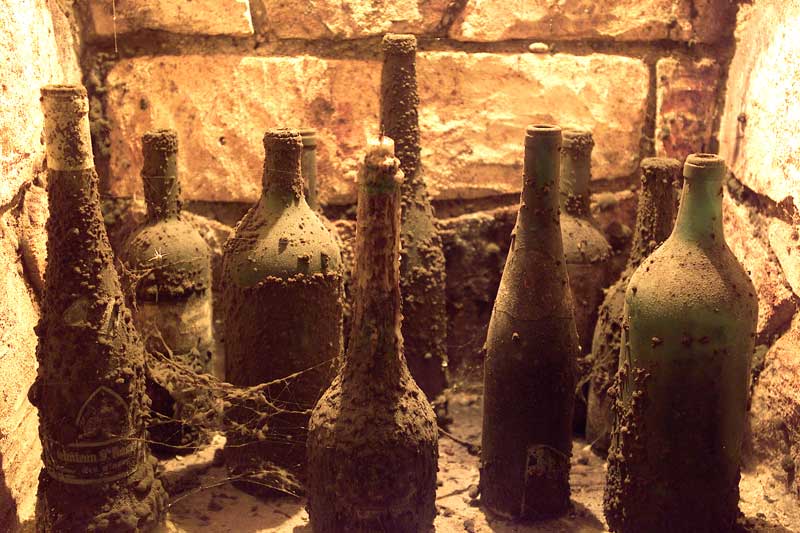2009
 Excellent
Excellent
A super year!
Two factors were critical in determining the character of the 2009 season: the cool period of weather during the blossom time at the end of May, and the glorious spell of high pressure weather during the harvest. This combination produced loose-berried grapes, and high concentration. A super year!
The season in detail:
Last winter was long, and with heavy snowfalls. Until the end of March there was much snow and ice, extending to the foothills of the Alps. The period saw rainfall amounting to half a year’s average precipitation. In the mountains, the snow lay very deep. On the 30th March, there was another cold snap, wth 70 cm of snow falling. On 31st March, midwinter conditions prevailed in Gmunden, with black ice. At the beginning of April, Arlberg had 2 m of snow on the house roofs, and up to 6 m on the ski runs.
The decisive weather change came on the 1st April. The morning was cool and dull, but within a few hours came a very rapid increase in temperature, and sunshine. Spring had arrived. The next few days brought growth forward. The strength of the waxing moon, rising in the east, also had a big effect on growth. Lake Neusiedl was brim-full, with the margins flooded. At last a supply of water for the summer.
On 17th April came the first thunderstorm, including light hail. But it then became extremely dry, with hot weather again. New corn was starting to wither before the fruit formed. By mid-May, still no prospect of rain, just some light drizzle, which stongly encouraged the growth of mildew (12th May). It stayed extremely dry until the end of May. On 29th and 30th May rain fell – approx 20 lt./m2 – with sharp cooling to below 10 ° C. In Bernstein/Kalteneck there were even a few centimeters of snow.
The first flowers appeared on 18th May, main flowering on the 22nd, full flowering between 25.27th May. Cooler weather came over the Whit bank holiday, but by then the main flowering was finished. At the end of the flowering we started de-leafing, partly by machine. A few days later we sprayed with sulphur and copper.
On the 7th June first signs of possible peronospora infection. 12-15 mm rain, 16 ° C. Leaf weness duration measured. The next day is sultry!
We are about to start the first leaf pruning. From 8th June first pruning of BF, PN, and later ZW. Side shoot growth developing strongly. The weather is not too hot, but sometimes very humid. Good development. The grapes clean themselves and become loose-berried.
The 19th June is again very humid, but the weather then cools, and the longest day of the year brings fresh air, a pleasant wind, and much, much light. That benefits the vines, and the development of the berries continues in weather which is not too hot, and where the water supply is just right.
During the week 20-28th June it rained, a total of 80 lt/m2 – a
lot, but good. On 24th June full peronospora infection wa spresent. It is again humid, with the air smelling strongly of nearby Lake Neusiedl. On the evening of 25th June, thunderstorm and mist, like in autumn. 22 ° C maximum alarm! With this dampness and a waxing moon, there was great danger of fungal infection. Further rain until 4th July, the second week of rain. High temperatures and high air humidity with mist, as if it were autumn.
With a let-up in the rain on 27th June, we used the opportunity to mount a “Cavalry charge” of tractor spraying against fungal infection in the vines. A few hours later it rained again.
27th June (Dormouse Day) started sunny, but by late afternoon and evening came another shower of rain – not a good sign, since farming lore has it that seven further weeks of rain would follow (70 % probability).
The start of grape thinning on 29th June at St. Laurent. The grapes were exceptionally large. There was no end to the rain, one or more thunderstorms occuring almost every day. Rainfall reached 150 lt./m² since the 21st June. Scattered instances of Pero and Oidium infection were to be seen. But, given the weather conditions, the grapes were still looking wonderful.
A hot week followed, rain coming again in mid-July. Then very hot weather to the 22nd July. The fungal infections dried up. Unfortunately the rain came again until 25th July, and the likely yield appeared not to be very high.
For the end of July nights were unusually cold.
Rainy conditions continued until the middle of August, but then came a very dry period, with warm winds. The first drought damage to new vine plantings were to be found by 20th August. The first berries started to shrivel, but the occasional green berries were still to be seen, especially with Zweigelt. Water was now short (21st August). 28th August – 34 ° C. On 29th August, thunderstorms. On 30th August, weather conditions became autumnal. Harvesting began on 3rd September, with the main harvest between the 10th and 13th September. Weather extremely dry and relatively warm, with only a few cool nights until at least 9th October. Concentration levels very good. Swallows were still present on 8th September, but that was an unmistakable sign that Autumn was on its way. Most departed for their winter quarters on the 15th, with the last departing on the 28th September. Autumn had finally arrived. On the 3rd of October, autunmal cool weather set in, with a morning temperature of 6 ° C. The harvest at Kirschgarten took place between the 6th and 7th October. The first autunm mists were present until 14th October. After a final cold period, the last of the red grapes were finally cellared. It was not until the beginning of December that the harvest finally ended with grape sorting and selection.
